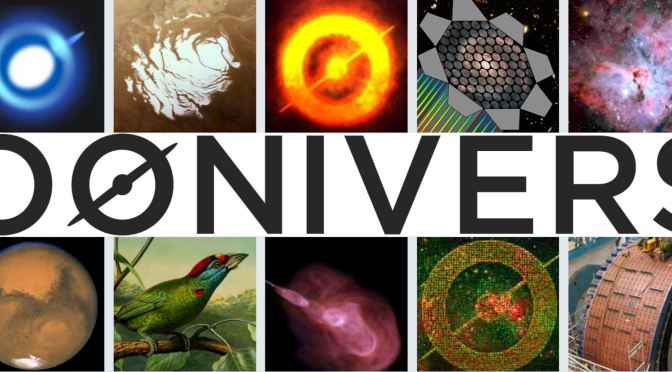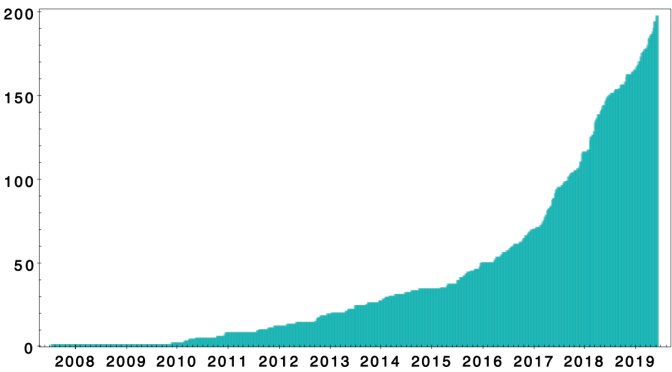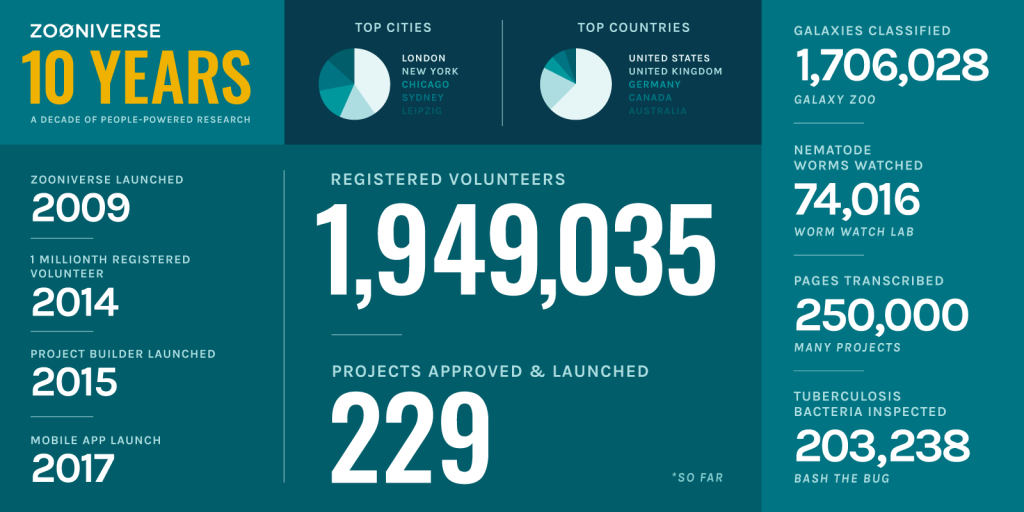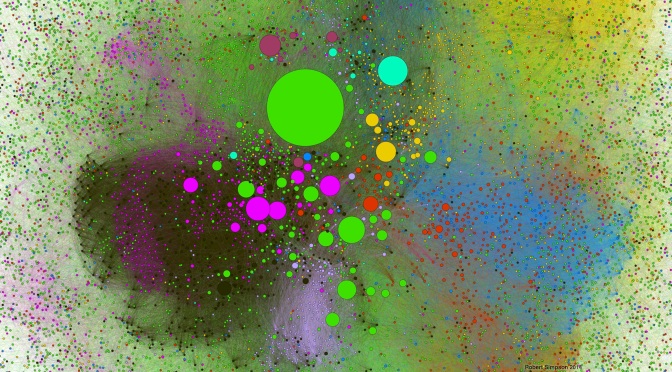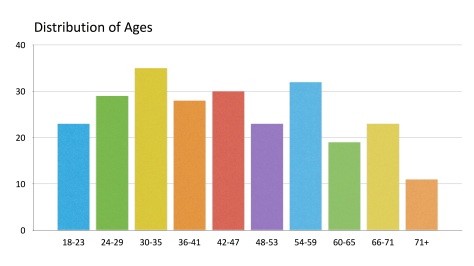As schools, workplaces, public spaces, and institutions across the globe close in response to COVID-19, we are aware that, for many people, online platforms like Zooniverse can function as a way to continue to have an impact and remain engaged with the world.
We cannot thank you enough for participating in Zooniverse and creating a welcoming and supportive space for all.
Below is a list of resources educators have used in classrooms that also work well remotely/online. Key to keep in mind is that Zooniverse projects are a great way to expose learners to new opportunities and ways of engaging in real research. These resources are meant to spark curiosity, learning, and exposure to research and the broader world. We encourage you to especially consider what students can gain from the process of participating. Remember: this is an opportunity for experiential learning, not a platform for creating busy work.
Note – there is no age limit for participating in Zooniverse projects, but children under the age of 16 need parent or guardian approval before creating their own Zooniverse account (see here for more details).
For 5-12 year olds:
- Curated list of age-appropriate Zooniverse projects for younger learners (w/ brief descriptions)
- Zooniverse-based Activity for 5-12 year olds
- Classroom.zooniverse.org
- Wildcam Labs
- Designed for 11-13 year olds, but the content can easily scale down for younger audiences.
- Great way to engage if you love looking at photos of wild animals and want to investigate ecological questions. The interactive map allows you to explore trail camera data and filter and download data to carry out analyses and test hypotheses.
- Educators can set up private classrooms, invite students to join, curate data sets, and get access to the guided activities and supporting educational resources.
- Individual explorers also welcome – you don’t need to be part of a classroom to participate.
- An example set of lessons based around Wildcam Labs, focused on using wildlife camera citizen science projects to engage students in academic language acquisition
- Wildcam Labs
- Planet Hunters Educators Guide
- Designed for 11-13 year olds.
- A Zooniverse – NASA collaboration through which students learn about citizen science, explore how astronomers search for planets around distant stars, participate directly in the search for exoplanets through PlanetHunters.org, and then design and draw their own planetary system.
- Developed by Chicago’s Adler Planetarium Education Specialist Julie Feldt and Adler Director of Teen Programs Kelly Borden.
- Notes from Nature Activity
- Designed for 11-13 year olds.
- Through this lesson students observe, record, and document specimens, become a part of the Zooniverse Notes from Nature project, transcribe specimens, connect art and science, and sketch birds in a science notebook.
- Developed by teachers as part of StudentsDiscover.org
- Floating Forests: Teaching Young Children About Kelp and Climate Change
- STEAM Squad Workbooks and Activities
- Designed for 11-13 year olds
- A series of 5 workbooks with science, humanities, and art activities. Release for free online in response to school closures.
- The final activity in each workbook is participation in a Zooniverse project, with accompanying reflection questions.
- Developed by Eleanor Spicer Rice, entomologist and writer, in collaboration with Zooniverse
- A series of lesson plans using data, concepts and images from the Snapshot Wisconsin statewide trail camera project.
For teens and adults:
- Curated list of Zooniverse projects (w/ brief descriptions)
- Zooniverse-based Lesson Plan for teens and adults
- Classroom.zooniverse.org
- Wildcam Labs
- Designed for middle school classrooms, but the content can easily scale up for older audiences.
- See description above.
- Astro101 with Galaxy Zoo
- Designed for undergraduate non-major introductory astronomy courses, but the content has been used in many high-school classrooms as well.
- Students learn about stars and galaxies through 4 half-hour guided activities and a 15-20 hour research project experience in which they analyze real data (including a curated Galaxy Zoo dataset), test hypotheses, make plots, and summarize their findings.
- Developed by Julie Feldt, Thomas Nelson, Cody Dirks, Dave Meyer, Molly Simon, and colleagues.
- For both Wildcam and Astro101 Activities
- Educators can set up private classrooms, invite students to join, curate data sets, and get access to the guided activities and supporting educational resources.
- Individual explorers also welcome – you don’t need to be part of a classroom to participate.
- Wildcam Labs
- Planet Hunters Educators Guide
- Designed for 11-13 year olds, but the content can easily scale up for older audiences.
- See description above.
- Notes from Nature ‘WeDigBio’ Educational Resources
- Videos showcasing the researchers
- High School and Undergrad classroom lesson plans and resources
- Notes from Nature Activity
- Designed for 11-13 year olds, but the content can easily scale up for older audiences.
- See description above.
- Snapshot Safari-based Lesson Plans and Interactive Timeline
- Developed by University of Minnesota PhD student Jessica Dewey
- Kelp Forest Ecology Lab
- Through the Zooniverse FloatingForests.org project, researchers are striving to understand the impact of climate change on giant kelp forests, an indicator of the health of our oceans. In this lab, students analyze Floating Forest and other ocean data to explore their own research questions.
- Developed by Cal State – Monterey Bay faculty Dr. Alison Haupt and colleagues
- A series of lesson plans using data, concepts and images from the Snapshot Wisconsin statewide trail camera project.
- NEH Teacher’s Guide for Digital Humanities and Online Education
Join the Conversation and Share Ideas:
We’d love to hear about your experiences with Zooniverse. Join the conversation in our ‘Talk’ discussion forum around Education and the Zooniverse. There’s a wonderful community there of formal and informal educators and students who are interested in sharing resources and ideas.
If you need a record of your students’ contributions:
You can keep track of how many classifications you’ve contributed if you register (providing a username and email address) within Zooniverse.org. Once signed in, at Zooniverse.org you’ll see your display name and your total classification count. If you hover over the circle surrounding your avatar, you’ll see the classification counts for each specific project you’ve participated in. Some teachers have their students share a screenshot of this zooniverse.org page as a record of contributions.
Please note that there is no built-in time-tracker within Zooniverse. However, participants can use the number of classifications they’ve contributed as a proxy for time spent on the site. On average, a person contributes 20-75 classifications/hour on most projects. So, for example, if a student has done 100 classifications, you can estimate that they’ve spent ~2 hours classifying on Zooniverse; e.g., 2 hours x 50 classifications / hour = 100 classifications.
Other Opportunities:
Check out NASA’s Citizen Science project list and SciStarter for other citizen science opportunities.

